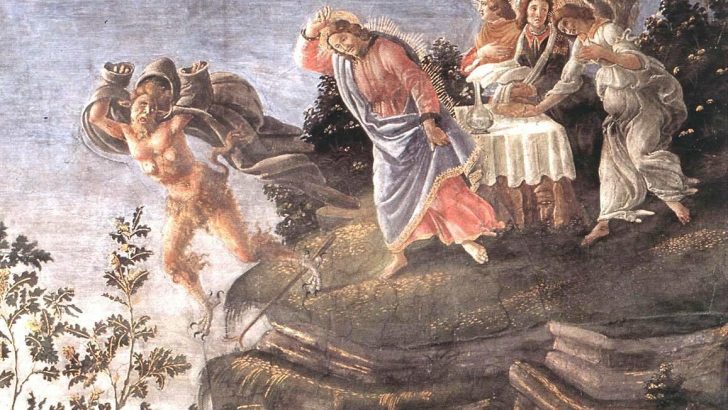The Irish Spirit – Issue No. 9
In the Hebrew Bible, mountains have always been significant places where the Israelites encountered the Presence of God. Because mountaintops were high above the clouds the Jewish people discerned that this is where God could be experienced par excellence.
Mountains were the places where the patriarch and the prophets went to be closer to God and discern his will at times of crisis and anxiety.”
The Book of Exodus tells us that Moses came upon the burning bush on Mount Horeb and the Lord instructed him to remove his sandals because the place where he was standing was “holy ground”.
Mountains were the places where the patriarch and the prophets went to be closer to God and discern his will at times of crisis and anxiety.
After the arrival of the children of Israel at the foot Mount Sinai, Moses ascended to the mountaintop and returned with stone tablets containing the Ten Commandments.
At the end of his life, as the Jews wondered if they would ever see the Promised Land after years wandering in the desert, God brought Moses to the top of Mount Nebo where he could see the land of Israel to fulfil his promise that he would see the “land of milk and honey”. On a clear day, one can even today see the city of Jerusalem from the top of Nebo which is in modern-day Jordan.
So, at the time of Jesus mountains would have been synonymous with the Divine Encounter for Jews.
After his baptism in the River Jordan by his cousin John the Baptist, Jesus when to the area around Jericho and spent 40 days and 40 nights in the desert. The Gospel recalls that Satan took Jesus to the top of what we now call Mount Temptation and tested him. It’s significant that this happened before the Lord began his public ministry and to this day there is a monastery where monks live on the mountain in remembrance of God’s ultimate triumph over evil.
Some of the most important moments in that public ministry also happened on mountains such as the Sermon on the Mount and the giving of the Beatitudes on what pilgrims can pray today as Mount Beatitude.
One of the most evocative moments in the New Testament takes place on the top of Mount Tabor in the Transfiguration where Jesus is joined by the prophets Moses and Elijah and the Heavens open and God proclaims: “This is my beloved Son, with whom I am well pleased; listen to him” (Mark 9:7).
Mount Precipice on the outskirts of Nazareth is the site where Jesus was rejected by the people of his hometown after he had been preaching in the synagogue and they had taken him there to throw him off as recorded in the Gospel of Luke. Today one can visit the site and see the nearby Church of Mary’s Fear where the tradition records that the Mother of God witnessed the angry mob jostle with her son.
The Mount of Olives is frequently mentioned in the New Testament as part of the route from Jerusalem to Bethany and the place where Jesus stood when he wept over the city.
We know that Jesus spent time on both sides of the mountain both in Bethany (where he raised Lazarus from the dead) and on the other side in Jerusalem itself. It seems likely he stayed here during his trips to Jerusalem because the bible records that in the evening he returned here to rest.
It was to the Mount of Olives where the Lord returned after the Last Supper on the night of his betrayal and it is here that the bible also records where Jesus returned to Heaven at the end of his earthly life – a moment we celebrate in the Feastday of the Ascension.
The scriptures illustrate that in biblical times, holy men and women encountered God on holy mountains and they still do.


 Michael Kelly
Michael Kelly
